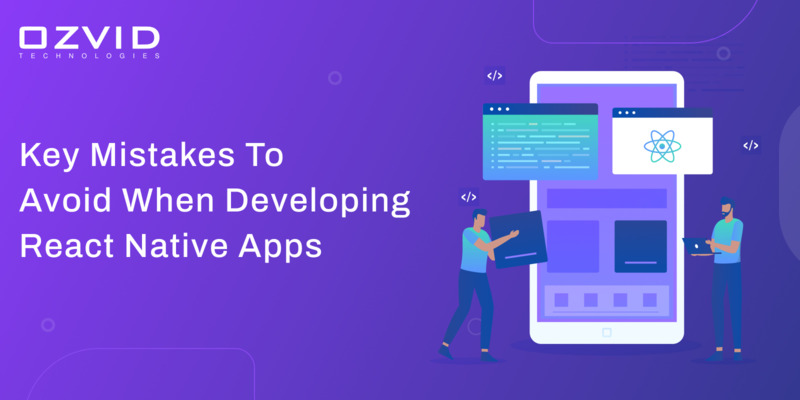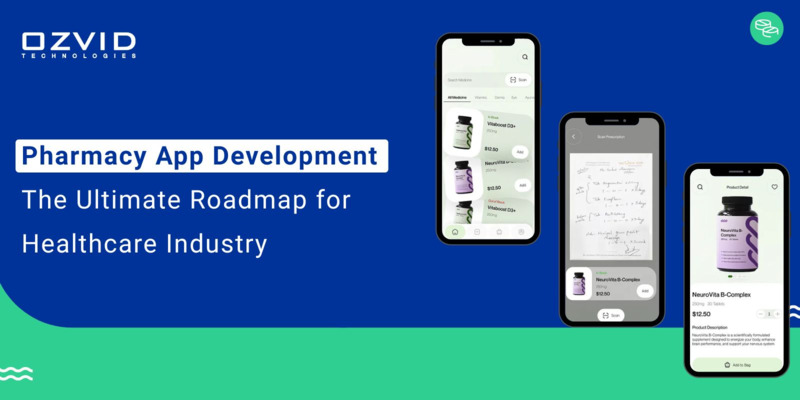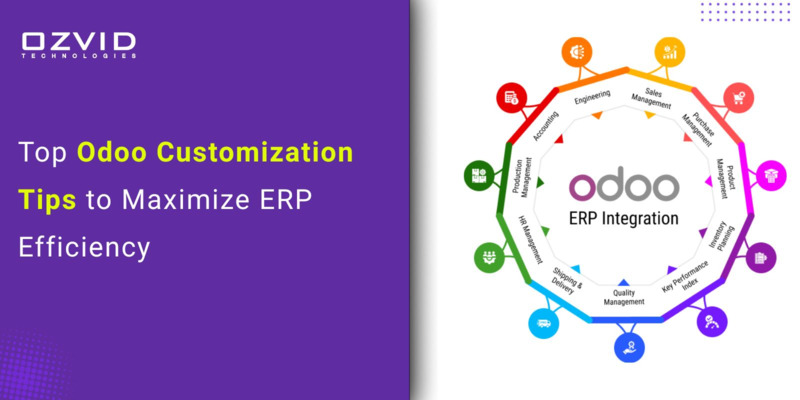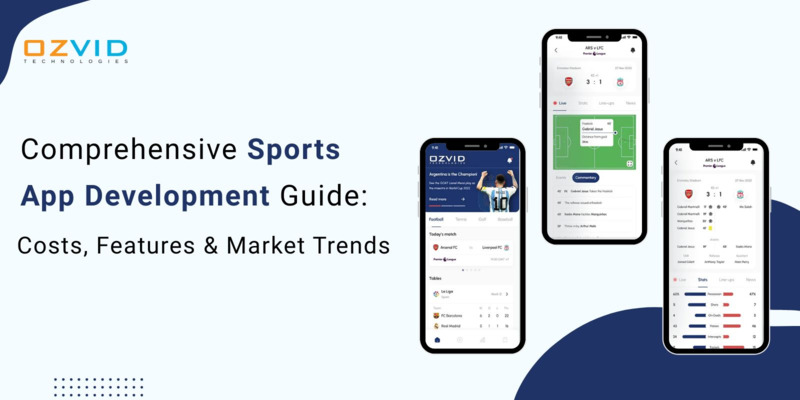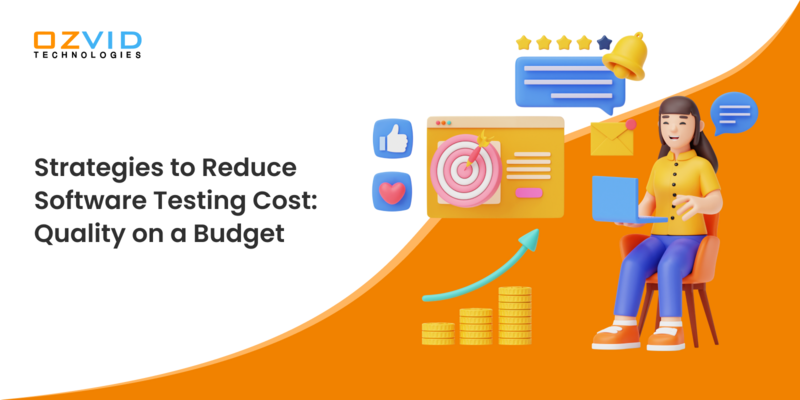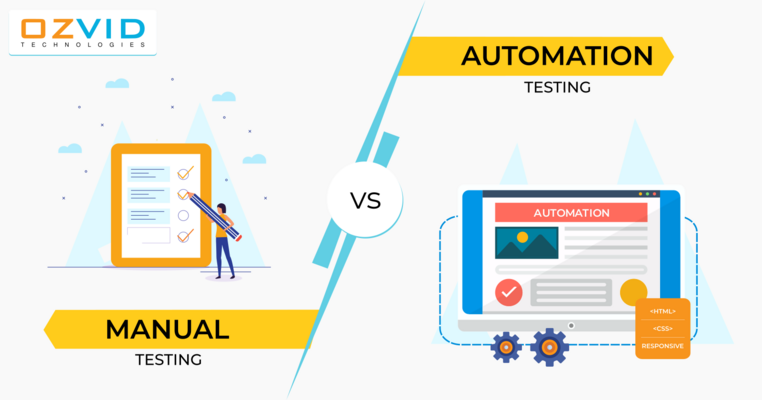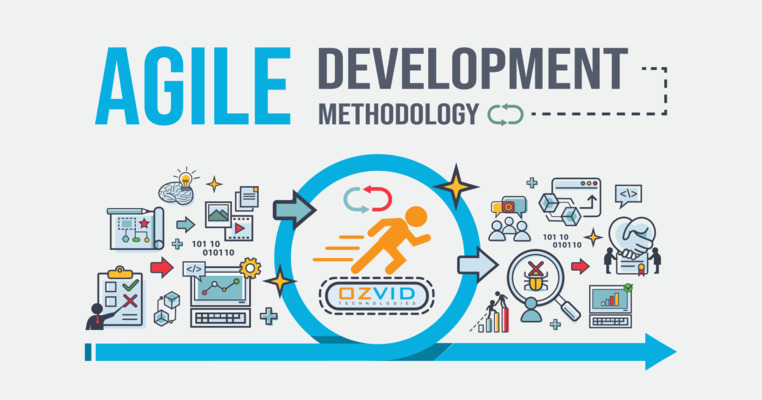- Aug 05, 2025
- Quality Assurance
- 1822
Share this post on:

In the competitive digital landscape, every business—whether a startup or an enterprise—seeks to deliver exceptional products and seamless user experiences. One of the most effective ways to achieve this is by integrating quality assurance (QA) processes into every stage of development and operations. At OZVID Technologies, we strongly believe that quality assurance in business is not just a phase in the software lifecycle but a continuous commitment to excellence. With the help of advanced quality assurance software, professional qa testing software, and proven methodologies, businesses can eliminate defects, boost efficiency, and win customer trust.
Did you know that an average app loses 95% of users after 90 days? According to statistics, less than 25% of app users use the app again, and an average app loses 95% of users after 90 days.
In this blog, we will explore how businesses can streamline their operations with software testing and quality assurance, highlighting the best practices, tools, and benefits of partnering with a reliable quality assurance services company like OZVID Technologies.
Key Takeaways
- Integrating quality assurance early in the development process helps prevent costly errors and delays.
- Automated QA testing using advanced software enhances speed, accuracy, and test coverage.
- Continuous testing within agile and DevOps pipelines ensures faster and more reliable software delivery.
- Effective collaboration between QA and development teams improves efficiency and product quality.
- Partnering with a reliable quality assurance services company like OZVID Technologies ensures scalable, secure, and high-performing software solutions.
What is Quality Assurance?
Quality assurance refers to a systematic process aimed at ensuring a product or service meets specified requirements and standards. Unlike quality control, which focuses on identifying defects in the finished product, qa is proactive—it prevents issues before they occur.
When we talk about quality assurance in software testing, we refer to a set of activities that ensure software products meet performance, usability, security, and functionality expectations. It spans across various stages of development, from requirement analysis to final deployment and even maintenance.
At OZVID Technologies, we define qa testing as an integral component of every development project we undertake. It guarantees not only the functionality but also the reliability and scalability of our digital solutions.
Why Quality Assurance in Business is Crucial
In today’s fast-paced and ever-evolving digital landscape, quality assurance in business plays a vital role in defining the success and longevity of an organization. As customers become increasingly tech-savvy and competition continues to grow across every industry, businesses can no longer afford to release products or services that are subpar or riddled with issues. This is where quality assurance becomes an essential pillar of business operations.
Let’s explore in detail why integrating a robust quality assurance strategy into your business is not just important—but absolutely crucial.
1. Enhances Product and Service Quality
The primary goal of quality assurance is to ensure that the final product or service delivered to the customer meets predefined standards of quality, functionality, usability, and reliability. By identifying flaws and inconsistencies early in the development lifecycle, QA teams can eliminate errors before the product goes live. This results in more stable, high-performing, and user-friendly applications or services.
When businesses prioritize quality assurance in software testing, they are better equipped to deliver software that is free from bugs, logical errors, or performance issues. This leads to better user experiences, reduced downtime, and ultimately, a more trustworthy product.
2. Boosts Customer Satisfaction and Retention
Customer expectations today are higher than ever. Even a minor glitch or bug in a digital product can drive users away or result in negative reviews that damage brand credibility. Quality assurance ensures that the final output is intuitive, secure, and functions as intended across different platforms and devices.
By leveraging software qa services, businesses can build products that meet customer needs, provide consistent performance, and offer seamless interactions. This helps foster customer trust, enhances satisfaction, and increases the likelihood of customer retention and long-term loyalty.
3. Prevents Costly Errors and Reduces Rework
One of the most significant benefits of integrating qa testing early in the development cycle is the reduction in post-launch fixes and rework. Fixing bugs during the development phase is significantly more cost-effective than correcting them after deployment.
Without quality assurance services, businesses may find themselves dealing with frequent system crashes, failed updates, and patch fixes that not only consume time and resources but also interrupt business continuity. A strong qa process helps identify and resolve these issues early, ultimately reducing costs associated with post-production maintenance.
4. Improves Operational Efficiency
With the support of modern quality assurance software and qa testing software, businesses can automate repetitive tasks, speed up testing cycles, and ensure that critical features are functioning correctly with every new deployment. This efficiency trickles down to every aspect of the business—from faster product launches to smoother internal processes.
Implementing structured software testing and quality assurance practices helps align development and testing teams, encourages accountability, and creates a collaborative environment where continuous improvement is part of the company culture. The result? Higher productivity and more efficient workflows.
5. Enables Faster Time-to-Market
In a competitive market, timing is everything. Businesses that can roll out high-quality software or services faster than their competitors have a significant advantage. With efficient qa testing strategies in place, companies can accelerate their release cycles without compromising on quality.
Automated testing frameworks, real-time defect tracking, and continuous integration are just some of the tools that allow QA teams to quickly identify and fix issues. This enables development teams to stay agile and responsive to market demands, reducing time-to-market and increasing business agility.
6. Ensures Regulatory Compliance and Security
For businesses operating in regulated industries—such as healthcare, finance, or e-commerce—compliance with legal and industry-specific standards is non-negotiable. Non-compliance can result in fines, legal consequences, and reputational damage.
Quality assurance in business includes ensuring that software complies with data privacy laws, accessibility standards, and industry regulations. Through comprehensive software quality assurance services, businesses can verify that their products meet all compliance requirements and protect sensitive user data from breaches or vulnerabilities.
Security testing, penetration testing, and code audits are essential components of quality assurance in software testing, helping businesses create secure digital products that safeguard customer trust.
7. Supports Business Growth and Scalability
As businesses expand, they often face challenges related to handling increased users, transactions, or data loads. Without strong QA practices in place, these scaling efforts can lead to performance degradation, system failures, or usability issues.
Quality assurance services ensure that the product architecture, infrastructure, and codebase are scalable and capable of handling growth. Load testing, performance benchmarking, and stress testing all play critical roles in preparing your digital solution for increased demand and future expansion.
With the right software qa services, businesses can scale confidently, knowing their systems are built to support long-term growth without compromising quality.
8. Strengthens Brand Reputation
A single bug or system crash can make headlines and damage years of brand-building efforts. On the other hand, a seamless and high-performing digital product enhances your brand’s reputation and sets you apart in the eyes of customers, partners, and investors.
By consistently delivering reliable software through quality assurance, businesses demonstrate professionalism, technical competence, and a commitment to user satisfaction. This enhances credibility in the market and builds a strong, resilient brand image.
9. Facilitates Informed Decision Making
Quality assurance processes are supported by detailed test reports, analytics, and dashboards that provide valuable insights into system performance, user behavior, and defect patterns. These insights enable product managers, developers, and business leaders to make data-driven decisions.
For example, tracking KPIs like defect leakage rate, test coverage, or user session durations can help identify areas that need improvement and prioritize feature enhancements or technical investments. This leads to better strategic planning and smarter resource allocation.
Best Practices to Streamline Business with Quality Assurance
To achieve sustainable growth, businesses must ensure that their software products or services function seamlessly, deliver a smooth user experience, and meet industry standards. This is where quality assurance in business becomes a vital asset. Implementing the right strategies and adhering to QA best practices enables companies to avoid costly errors, enhance productivity, and maintain brand reputation.
At OZVID Technologies, we have compiled a comprehensive list of quality assurance best practices that organizations can follow to streamline operations and deliver top-quality digital products with confidence.
1. Incorporate QA from the Start of the Development Lifecycle
One of the most effective approaches to quality assurance in software testing is to implement testing right from the initial stages of development—also known as “Shift-Left” testing. Rather than treating QA as a separate or final phase, it should be embedded into every development phase, starting from requirements gathering to deployment.
Early testing allows the identification of design flaws, logic errors, and performance bottlenecks before they escalate. This proactive approach reduces rework, saves time, and ensures that the project remains aligned with client expectations from day one.
2. Embrace Automated Testing Using QA Testing Software
Manual testing, while essential in certain scenarios like usability and exploratory testing, is time-consuming and prone to human error. For repetitive and high-volume testing tasks, automation is the key to speed and consistency. By integrating advanced qa testing software, businesses can run multiple test cases simultaneously, simulate user behavior, and perform regression testing efficiently.
Automation helps in shortening release cycles and provides consistent results, especially in agile and DevOps environments. At OZVID Technologies, we utilize cutting-edge quality assurance software to automate tests, track bugs, and ensure that updates don’t break existing functionalities.
3. Define Clear QA Objectives, Metrics, and KPIs
To measure the effectiveness of your quality assurance services, it's important to set well-defined goals and metrics. Establish KPIs like:
- Defect Density: Number of bugs per line of code.
- Test Coverage: Percentage of code covered by tests.
- Mean Time to Detect (MTTD): How long it takes to identify a bug.
- Mean Time to Resolve (MTTR): Time taken to fix identified bugs.
Having a data-driven QA strategy provides insights into areas of improvement and helps in optimizing software qa services over time.
4. Create and Maintain Comprehensive Test Documentation
A well-documented QA process is vital for clarity, accountability, and knowledge transfer. Documentation should include test cases, testing procedures, data sets, bug reports, and user scenarios. This ensures consistency and provides a reference point for all team members, especially when onboarding new testers or developers.
By maintaining detailed documentation, your team ensures transparency and traceability throughout the development cycle. At OZVID Technologies, our quality assurance services company relies on thorough documentation as a pillar of structured QA delivery.
5. Foster Continuous Collaboration Between Development and QA Teams
Effective qa is not a siloed activity. It requires ongoing communication and collaboration between developers, testers, project managers, and business analysts. When QA teams are involved in discussions and decision-making processes, it leads to fewer misinterpretations of requirements and quicker resolution of issues.
We believe that successful software testing and quality assurance stems from a culture of shared ownership and transparency. Daily standups, sprint planning, and retrospectives are key ceremonies we follow to maintain alignment at OZVID Technologies.
6. Integrate QA into Agile and DevOps Workflows
In today’s fast-paced development cycles, it's essential to adopt QA strategies that complement agile and DevOps methodologies. Continuous Integration/Continuous Deployment (CI/CD) practices allow development teams to push code frequently and with confidence. Incorporating continuous testing in the CI/CD pipeline ensures that every build is automatically validated before release.
This integration not only minimizes the risk of production issues but also accelerates the time-to-market. Our software quality assurance services at OZVID Technologies are built to align perfectly with agile sprints and DevOps practices, offering fast, iterative feedback that drives quality and agility.
7. Conduct Regular Performance and Load Testing
Performance issues can severely damage a brand's reputation. Therefore, it is critical to run performance testing and load testing to assess how your software behaves under different conditions. Whether it’s a sudden traffic spike or data-intensive operations, your software must maintain stability and responsiveness.
At OZVID Technologies, our quality assurance software helps simulate real-world traffic and user loads, identifying system bottlenecks and performance thresholds to ensure uninterrupted service delivery.
8. Test Across Real Devices and Environments
While simulators and emulators are useful during initial testing phases, real devices provide accurate insights into how your application performs in actual conditions. Factors like screen resolution, memory usage, hardware compatibility, and battery consumption are better evaluated on physical devices.
Our software qa services include robust testing across a wide range of real mobile devices, desktops, and browsers to ensure cross-platform compatibility and optimal user experience.
9. Prioritize Security Testing and Compliance Checks
Security breaches can lead to data leaks, legal complications, and reputational damage. Integrating security testing within your QA strategy ensures that your application is safeguarded against common threats such as SQL injection, cross-site scripting, or unauthorized access.
We embed security and compliance checks within our software testing and quality assurance process to help clients meet regulatory requirements such as GDPR, HIPAA, and PCI-DSS.
10. Continuously Update QA Tools, Skills, and Processes
QA is an evolving discipline. With new technologies, devices, and platforms entering the market regularly, sticking to outdated tools or practices can hinder efficiency. Businesses must constantly invest in upgrading their QA toolset, adopting AI-based testing techniques, and upskilling their teams.
At OZVID Technologies, we invest in training and adopt the latest advancements in qa testing software and automation frameworks to keep our quality assurance services at the forefront of innovation.
Exploring Types of QA Testing
1. Functional Testing
This involves verifying that the software performs its intended functions. Functional testing is crucial for ensuring user interactions, data processing, and integrations work as expected.
2. Performance Testing
Here, the focus is on responsiveness, speed, and stability. Our software qa services include rigorous performance tests to ensure the application scales well under load.
3. Security Testing
With rising cyber threats, security testing is non-negotiable. It ensures that your software is free from vulnerabilities and compliant with data protection standards.
4. Usability Testing
This assesses how intuitive and user-friendly the software is. At OZVID Technologies, we use usability testing to ensure seamless user journeys and efficient workflows.
5. Compatibility Testing
It ensures the software performs consistently across different browsers, operating systems, and devices.
Choosing the Right QA Testing Software
Investing in the right qa testing software is essential for effective quality assurance. Here are some widely used tools in our QA practice:
- Selenium – Ideal for web application automation.
- JIRA + Zephyr – For test management and bug tracking.
- TestNG – Provides high-level annotations and flexible configurations.
- Appium – Used for automating mobile applications.
- Postman – For API testing.
- Jenkins – Integrates continuous testing in CI/CD pipelines.
The right quality assurance software allows testers to simulate user behavior, run scripts, track bugs, and generate insightful reports in real time.
Role of Software QA Services in Agile and DevOps Environments
In today’s agile and DevOps-centric development models, software testing and quality assurance are no longer isolated functions. They are embedded within the workflow, ensuring continuous feedback and rapid improvement.
At OZVID Technologies, our quality assurance services are perfectly aligned with agile sprints and DevOps pipelines. Our testers work closely with developers in real-time, making qa faster, smarter, and more effective.
How Software Quality Assurance Services Improve Business ROI
Many businesses wonder whether investing in quality assurance services yields tangible ROI. The answer is a resounding yes.
1. Shorter Time-to-Market
Through automation and early defect detection, QA accelerates delivery timelines and helps businesses capitalize on market opportunities quickly.
2. Fewer Customer Complaints
Reliable software leads to a smooth user experience and reduces customer support overheads.
3. Stronger Brand Reputation
Flawless digital products boost credibility and build brand trust. With efficient quality assurance in software testing, businesses can avoid reputation-damaging bugs and failures.
4. Better Resource Allocation
By minimizing rework and maintenance tasks, teams can focus on innovation and growth, leading to improved productivity.
Why Choose OZVID Technologies for Quality Assurance?
At OZVID Technologies, we offer end-to-end quality assurance services tailored to your unique business needs. As a trusted quality assurance company, we bring together skilled QA engineers, the latest qa testing software, and an agile mindset to ensure your product exceeds expectations.
Here’s what sets us apart:
1. Comprehensive Testing Frameworks
From manual to automated testing, our team covers all aspects of software qa services—including functional, regression, load, security, and integration testing.
2. Customized QA Strategies
Every business is different. That’s why we design customized quality assurance in business strategies that align with your project goals, timelines, and technical requirements.
3. Dedicated QA Teams
Our experienced QA engineers are proficient in top-tier quality assurance software and modern test methodologies. With our dedicated QA teams, we ensure rapid delivery without compromising on quality.
4. Transparent Reporting
We keep you updated at every stage with comprehensive test reports, defect summaries, and real-time feedback. Transparency is the cornerstone of our QA partnerships.
5. Cross-Platform Testing
Whether it’s web, mobile, or desktop applications, our software testing and quality assurance services ensure consistent performance across platforms and devices.
Future of Quality Assurance: What Lies Ahead
The future of qa is driven by intelligent automation, AI-based testing, and predictive analytics. Here are a few trends shaping the future:
AI-Driven QA Tools: AI is helping testers predict high-risk areas, generate tests automatically, and improve coverage.
TestOps Integration: Merging testing with operations for smoother DevOps implementation.
Performance Engineering: Going beyond performance testing to proactively design systems for optimal performance.
Cloud-Based Testing: Scalability and flexibility through on-demand testing environments.
OZVID Technologies is already investing in these innovations to offer next-gen software qa services to our clients.
Final Thoughts
Integrating quality assurance into your business is no longer optional—it’s essential. From reducing costs and boosting performance to enhancing user satisfaction and driving innovation, quality assurance in software testing plays a pivotal role in business success. With expert software quality assurance services, cutting-edge qa testing software, and a strategic approach to testing, businesses can streamline their operations and stay ahead in the digital race. At OZVID Technologies, we take pride in being a reliable quality assurance services company committed to delivering excellence. Our goal is to help businesses build robust, secure, and scalable solutions through tailored quality assurance services.
If you're looking to elevate your business with dependable software qa services, partner with us today. Let’s ensure your software stands out—not just for its features, but for its flawless performance.
FAQ's
1. What is the difference between quality assurance and quality control in software testing?
Quality assurance focuses on preventing defects through process improvements and planning, while quality control identifies and fixes defects in the final product. QA is proactive; QC is reactive and typically performed after development.
2. What role does automation play in QA testing?
Automation speeds up repetitive test cases, improves accuracy, and enables continuous testing. It helps deliver faster releases and ensures high test coverage, especially in agile and DevOps environments.
3. Why is real-device testing important compared to simulators?
Real-device testing reflects true user conditions like screen resolution, memory usage, and hardware behavior. It ensures accurate performance insights that simulators or emulators often fail to replicate fully.
4. What future trends are shaping the field of software quality assurance?
AI-powered testing, predictive analytics, cloud-based QA environments, and TestOps are revolutionizing QA. These trends enhance efficiency, automate decision-making, and ensure adaptive quality processes for modern software systems.




